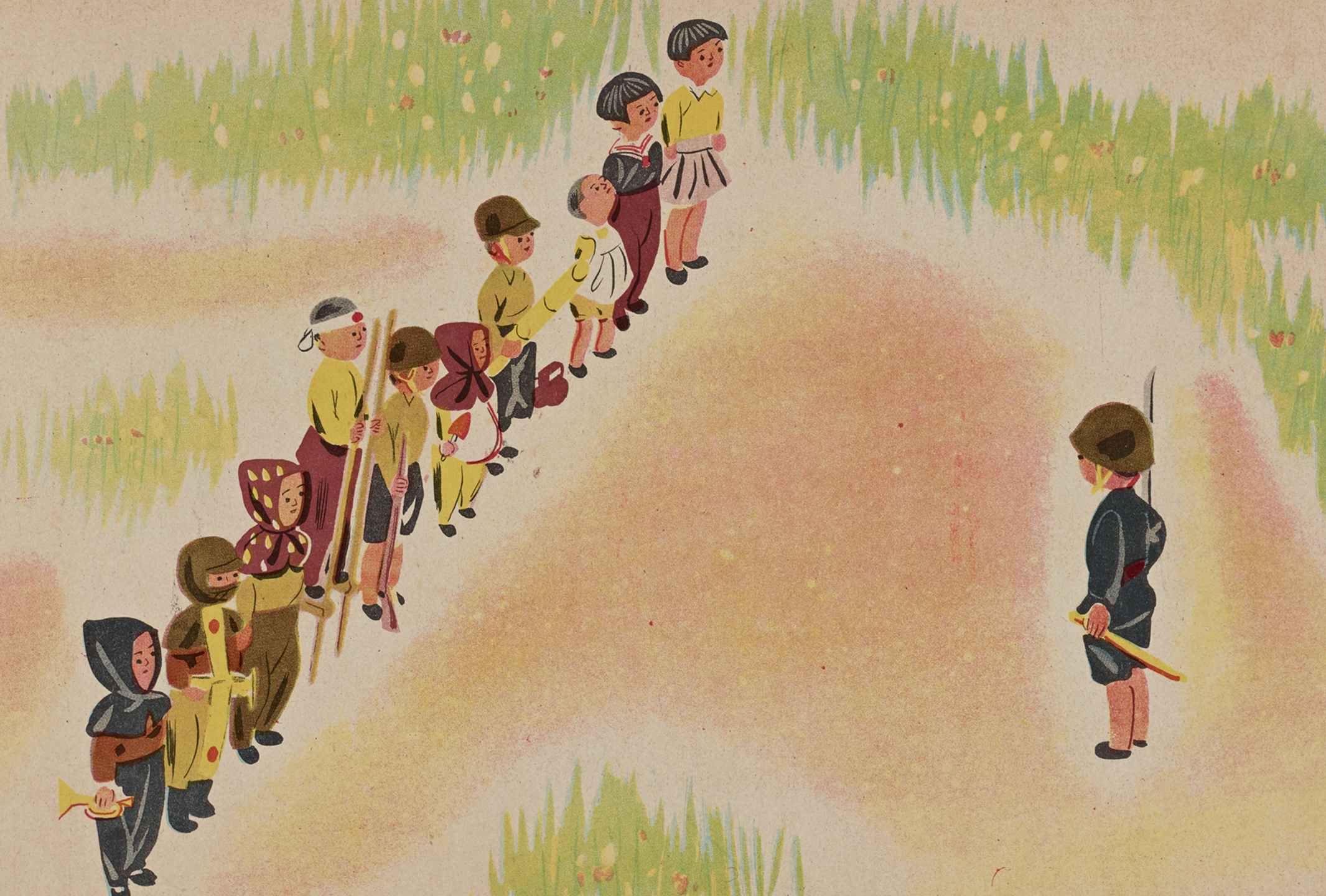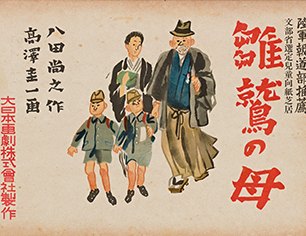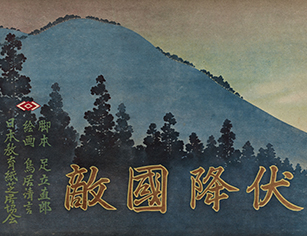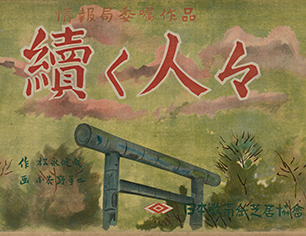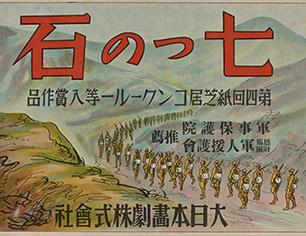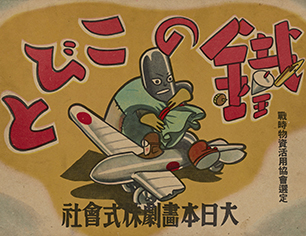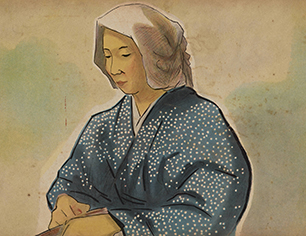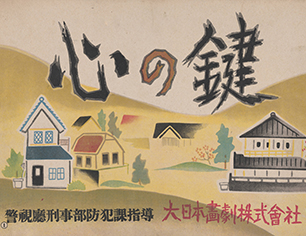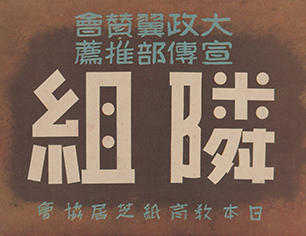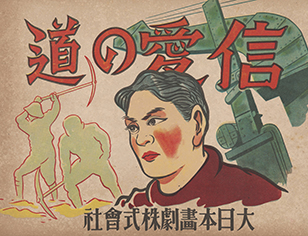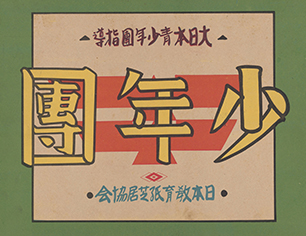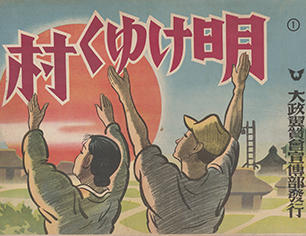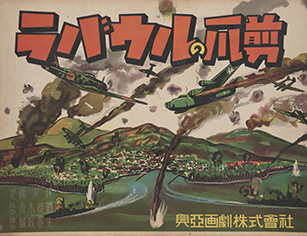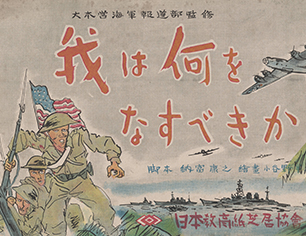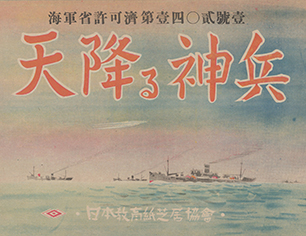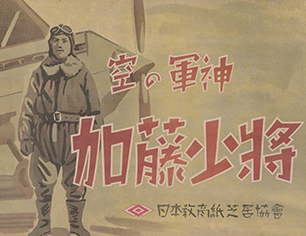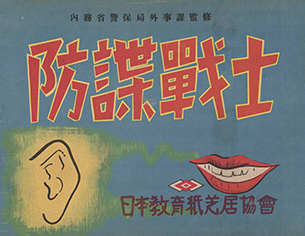Title - Transcribed
ラバウルの爪切
Title - Transliterated
Rabauru no Tsumekiri
Creators
Takumi Iizawa (author), Aoki Ryokuen (editor), Shiratori Haruo (artist)
Publisher
Kyōa Gageki Kabushiki Kaisha
Medium
Kamishibai with 20 lithographs
Credit
Kamishibai Collection, Hoover Institution Archives (2018C32.17)
This 1944 kamishibai ties a wide range of characters across the huge expanse of the empire from Rabaul in Papua New Guinea to Japan. The story is somewhat absurd, about a useful pair of nail clippers that get used around the empire and are then returned to their original owner. But Japanese propaganda was successful because it focused on more than just the glory of the empire. It linked distant venues of battlefield scenes with the mundane of homelife back on the main islands for children to consume and value as a moral but exciting lesson.
The play’s narrative begins with Sadao borrowing nail clippers from his sister, Harue, as he goes off with the army press team to an area of active fighting—Rabaul, on New Britain island. Some of the soldiers in Rabaul who meet Sadao use his nail clippers while sharing memories of home, leaving a part of themselves behind before they die in the battle. Sadao returns to Japan to boost the home front factory workers’ morale by telling the front line stories. At one of his tour stops, Sadao's sister is taking care of a fellow female volunteer worker, Yoshikawa, who has fallen ill. Although Yoshikawa at first insists on sending a telegraph to her mother to urge her to come, she becomes embarrassed after hearing about Sadao and the front lines and decides to endure her illness and be a part of the proud production force.


